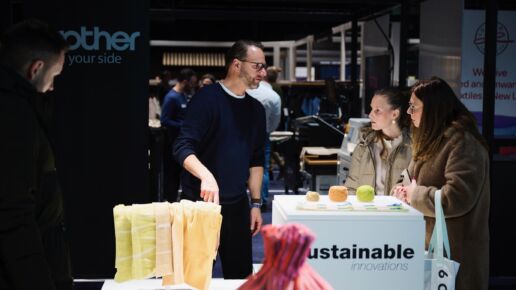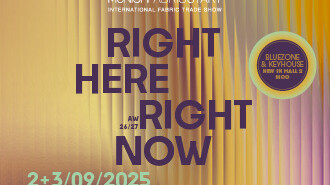The Power of Data:
Understanding How Data Tackles Challenges in the Textile Industry
by Muchaneta ten Napel
Data might feel intimidating for the fashion and textile industry, but it holds the power to unlock transparency, boost efficiency, and spark innovation. Traci Kinden, Director at TEXroad Foundation, shares her insights in an interview with Muchaneta ten Napel from Shape Innovate on how small, strategic steps and collaboration can transform data into a force for positive change.
Muchaneta: Let’s start with the big question: why does data seem so intimidating to people in the textile industry?
Traci: Data is such a small word with immense meaning, and everyone interprets it differently. If you don’t see yourself as a “numbers person,” it can feel overwhelming and even scary. A lot of the fear stems from misconceptions about what data is and how it can be used. But I’m determined to change that perspective and show that data can be accessible – and even exciting!
Muchaneta: That’s a great goal. Can you explain what TEXroad does with data to bridge these gaps?
Traci: At TEXroad, we work primarily in post-consumer textile flows. We partner with municipalities and their collection and sorting teams to gather data at every stage – collection, sorting, and processing. This data allows us to evaluate how systems are performing and measure the impact of changes over time. Additionally, we’re involved in EU-funded projects, like PESCO Up, where we develop minimum data requirements for textile recycling chains. Our goal is to make data a shared, standardized language that benefits the entire value chain.
Muchaneta: Speaking of EU-funded projects, what ensures the longevity of such initiatives after their official end?
Traci: EU-funded projects have defined start and end dates, but we strive to make their outcomes scalable and sustainable. For example, in PESCO Up, we’ve developed minimum data requirements for the recycling chain. These are shared across multiple projects to ensure consistency and long-term use. At TEXroad, we also focus on publishing non-sensitive datasets for open access, so the insights remain available to the industry even after the projects conclude.


Muchaneta: What are some of the biggest challenges you’ve faced in promoting data sharing and collaboration?
Traci: One major challenge is the lack of standardization in the industry. For instance, terms like “post-industrial waste” and “pre-consumer waste” are often used interchangeably, leading to confusion. Another hurdle is companies’ hesitancy to share data due to fears of exposing sensitive information. Building trust takes time – our sales cycles can span 12 to 24 months before concrete agreements are made.
Muchaneta: Do you think legislation could help push businesses to share and use data more effectively?
Traci: Legislation has potential, but it needs to be well-designed and adaptable to market realities. It’s crucial for businesses to align their data strategies with their priorities, whether it’s compliance with legislation or operational improvements. Taking small, strategic steps – like understanding what data you have and identifying gaps – can make navigating new policies manageable.
Muchaneta: Can you share a success story where data made a tangible impact?
Traci: Absolutely. I worked with a Dutch textile preprocessor that significantly reduced its material rejection rate – from 25–30% to under 5% – by using data to communicate clear expectations to suppliers. This kind of progress demonstrates how even small-scale data applications can lead to systemic improvements.
“At TEXroad, we aim to answer the “stupid” questions – like how much post-consumer textile waste exists – so businesses can focus on the smarter ones. By improving data quality and accessibility, we’re helping the industry take meaningful steps toward circularity and sustainability.” – Traci Kinden, TEXroad Director
Muchaneta: Transparency is a recurring theme. Why is it so important?
Traci: Transparency builds trust. For instance, many people hesitate to use textile collection bins because they don’t know where their clothing ends up. Data can illuminate these processes, giving people confidence in systems like extended producer responsibility (EPR) schemes. Transparency also enables companies to evaluate their impact and make informed decisions.
Muchaneta: What excites you most about the future of textile data?
Traci: The potential to transform the industry excites me. Better data can level the playing field for SMEs, drive innovation, and address global issues like waste mismanagement. The possibilities are endless if we can improve data quality, accessibility, and speed.
Muchaneta: Finally, what role does TEXroad play in this transformation?
Traci: At TEXroad, we aim to answer the “stupid” questions – like how much post-consumer textile waste exists – so businesses can focus on the smarter ones. By improving data quality and accessibility, we’re helping the industry take meaningful steps toward circularity and sustainability.

Follow along on TEXroad’s journey on data as a key for material use and lifecycle. Learn more on TEXroad’s mission here.
THIS MIGHT BE ALSO INTERESTING FOR YOU
MUNICH FABRIC START – September 25 closing report
4. September 2025
At its 56th edition, MUNICH FABRIC START reinforced its clear positioning. Over two days, the Munich textile trade show brought the fashion industry together with its four show-in-show formats.
Materials as Agents of Change with Simon Angel
1. September 2025
Each season, the Sustainable Innovations forum brings together projects that provoke, inspire, and challenge assumptions. This year is no exception, with work ranging from bio-luxury couture to energy-generating textiles and regenerative materials grown from wetlands.
AUTUMN.WINTER 26/27 FABRIC HIGHLIGHTS & MATERIAL NOVELTIES – PART X
31. August 2025
For the first time in Germany, S2G XR (Style 2 Garment eXtended Reality) will present a live demo of its 3D textile configurator at booth A4.20 Not a teaser.
Living Matter: Bio-Luxury for Future Materials
31. August 2025
Indigo, a colour with a lot of history, is the main focus of this project. Denim has always meant strength and durability, and its roughness is linked to work and usefulness.
BLUEZONE NEWS FOR SEPTEMBER 2025 – PART VI
31. August 2025
At DNM Denim, the journey continues. Inspired by nature’s cycles and guided by Flow Theory, the company moves from Challenge to Focus, and now to Freedom—the phase where potential becomes power.
BIOTEXFUTURE: How to Make Textiles from Fossils
30. August 2025
The program is a group of businesses and universities working together to find scalable, bio-based alternatives.
Additionals Trends Autumn.Winter 26/27 – Part 8
30. August 2025
This collection embodies softness, simplicity, and flow – from soft-touch labels and stretchable materials that move with the body, to a calming palette of pastel tones and organic, natural fibers.
Wetlands Matters – by Marc Wijkmans
29. August 2025
Wijkman’s idea came from a simple but important observation: animals carry seeds across ecosystems in their fur.
AUTUMN.WINTER 26/27 FABRIC HIGHLIGHTS & MATERIAL NOVELTIES – PART IX
29. August 2025
The designs embrace various trend themes – sometimes subtle, sometimes expressive – and lend each fabric its own distinctive character.
MUNICH FABRIC START September 2025 – Outlook
29. August 2025
The countdown is on: in just three weeks, Munich will once againbecome the epicentre of the European fashion and textile industry. During the first week ofSeptember, MUNICH FABRIC START Exhibitions GmbH will unite all key fashion segments underone roof, reaffirming its position as one of Europe’s leading textile trade shows.











